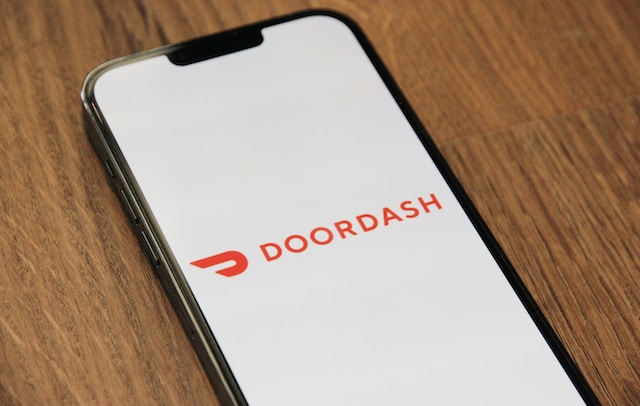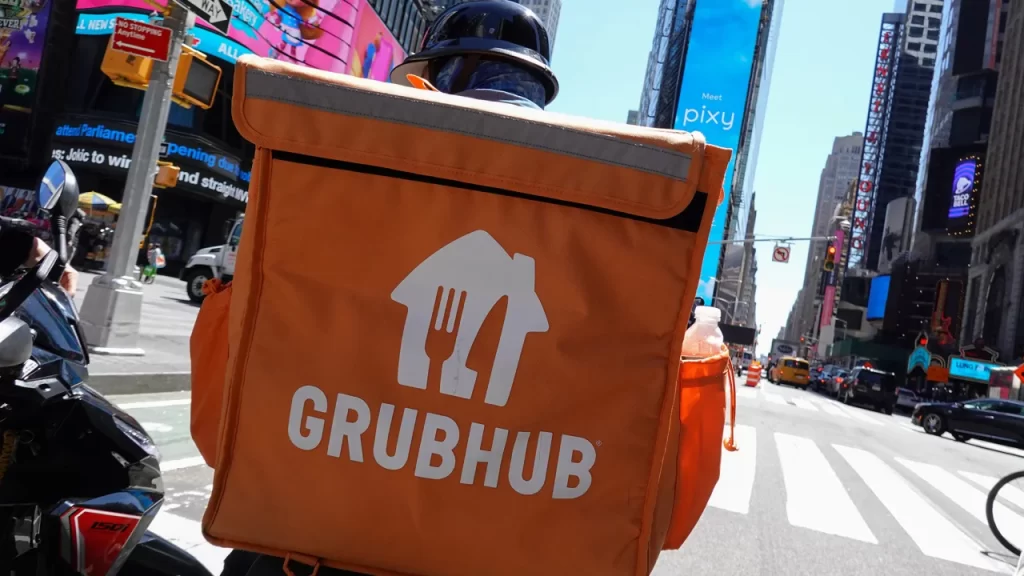Introduction
Food delivery services have become extremely popular in recent years, providing consumers with quick and convenient meal options delivered straight to their door. Ordering food for delivery makes life easier when you’re too busy to cook, don’t want to dine in, or crave a specific dish from your favorite restaurant. This article will explore the world of food delivery, from an overview of the top services to tips for getting the most out of having meals conveniently dropped at your doorstep.
Overview of food delivery services
Food delivery apps and websites like DoorDash, Uber Eats, and Grubhub allow customers to browse menus, place orders, and track delivery in real-time from restaurants in their area. Drivers pick up and deliver orders directly to customers. These third-party services offer restaurant exposure and orders while offering diners more variety and convenience.
The food delivery market has boomed in recent years. According to Statista, revenue in the online food delivery segment is projected to reach $28.5 billion in 2022 in the United States alone. As more consumers have grown accustomed to the ease of food delivery, these services have become mainstays in urban and suburban areas.
Pros of using food delivery services
There are many upsides to ordering your meals through an app instead of dining in or carrying:
- Convenience: Food gets delivered to your address, so you don’t have to leave home or interrupt your schedule.
- No lines or wait times: Order ahead so your food arrives when you want it—no worries about beating the dinner or lunch rush.
- Huge selection: Browse menus from dozens or hundreds of local restaurants in one app. Choose from a variety of cuisines.
- Easy ordering: Apps and sites save your favorites, payment info, addresses, and other details to streamline reordering.
- Promos and rewards: Services offer deals, discounts, and loyalty programs you can’t get from the restaurant directly.
- Contactless delivery: If you prefer limited interaction, drivers can leave orders unattended at your door.
Cons of using food delivery services
Of course, food delivery also comes with a few drawbacks:
- Fees: There are often service fees, small order fees, delivery fees, and driver tips that add to your total bill.
- Timing issues: Restaurants get overwhelmed during peak times, leading to delays. Traffic or other problems can affect drivers.
- Cold food: Food can get cold sitting for a while after cooking, in transit, or waiting for pickup.
- Packaging: No plating or in-house dining experience. Food and presentation may suffer.
- Inaccurate orders: Mixups can happen more easily with so many hands involved.
Popular Food Delivery Services
While many delivery providers are available today, a few major players dominate the market in most areas. Here are some details on the big three platforms.
DoorDash
Founded 2013 in Silicon Valley, DoorDash is now the leading food delivery app in the United States, partnering with over 500,000 restaurants. They have the largest market share at 57% thanks to operating in more than 7,000 cities. DoorDash also owns other services like Caviar.

Key features:
- Huge selection of local favorites and national chains
- DashPass subscription for free delivery from participating restaurants
- Fast and convenient order tracking and support
- Occasional promotions with discounted deliveries
Uber Eats
Ride-sharing giant Uber expanded into food delivery in 2014 with Uber Eats. They leverage their existing network of drivers to deliver meals and operate worldwide. Uber Eats makes up 26% of the US market currently.

Key features:
- Seamless integration if you already use Uber rides
- Delivery from a diverse range of local restaurants
- Appreciated loyalty program for frequent users
- Option to order grocery and convenience items
Grubhub
Grubhub launched the online food delivery trend over 20 years ago in 2004 as one of the first platforms. While now second to DoorDash in market share, Grubhub still enjoys massive popularity in NYC and other major cities.
Key features:
- Excellent customer service and order accuracy
- Easy to use Grubhub Perks rewards system
- Integration with Yelp reviews and photos
- Environmentally-friendly delivery through partnerships

While each app has unique perks, all provide the convenience and temptation of delicious meals arriving in minutes with just a tap on your smartphone.
How Food Delivery Services Work
Ordering through a food delivery app is simple, but a lot happens behind the scenes to get your meal from the kitchen to your home. Let’s look at what’s involved.
Placing an order
Select your items and quantities after browsing restaurant options in your delivery zone. Add any extras or special instructions in notes. Select a delivery address. (Some services let you send food directly to another person’s address.) Choose contactless delivery or hand-to-me. Select the desired delivery time if scheduling in advance: input payment and tipping info and place the order.
Many apps learn your go-to orders and make reordering one click. Customize and save favorites. Enter promo codes if available. Memberships can provide free delivery and other perks.
Delivery Process
After receiving the order, restaurant staff prepare and package up items. A driver is dispatched to the restaurant once the food is estimated to be ready. The driver picks up your order, gets directions to the delivery address, and hits the road.
Apps provide real-time order tracking and estimated arrival times, so you’ll know when to expect the handoff. Contactless deliveries mean drivers will leave your order for pickup. For hand-to-me, they will request your name to verify.
Payment and tips
You’ll pay estimated costs upfront, including taxes and fees, when placing the order. (Some apps don’t charge fees to diners.) Tipping is optional or can be left to your discretion. You’ll pay the final total and add any additional tip after delivery.
Most services allow cash tips for drivers if you request hand-to-me delivery. You can also tip after in the app. Make sure to tip generously, as drivers often rely heavily on tips for compensation.
Factors to Consider When Choosing a Service
With an increasing number of food delivery apps, it helps to assess a few key factors when deciding which platform to use:
Delivery fees and minimum order costs
Apps like DoorDash and Uber Eats typically charge a delivery fee of a few dollars and a service fee. A minimum subtotal may be required to place an order or qualify for free delivery. Compare fee structures.
Delivery range
Check the delivery zone mapped out for each service. Ensure your home or office address falls within the boundary of restaurants on the platform you want to use.
Restaurant selection
Browse the listed restaurant partners on each app. Look for your go-to spots or explore highly rated options. The variety of cuisine types can vary, too.
Order accuracy and food quality
Check reviews and see what other users report about order mistakes or food not traveling well through delivery. Couriers, packing methods, and transit times all impact your meal.
Prioritizing the factors that matter most to your needs, preferences, and budget can help you choose the best delivery platform. Don’t be afraid to try a few!
Tips for Using Food Delivery Services
Here are some pro tips to make sure your delivered meals arrive on time and at peak quality every time:
Take advantage of promos and rewards.
Sign up for newsletters to get alerts about discounts for first-time users, percentage off coupons, and promotional freebie offers. Download apps to earn loyalty points towards free food.
Be clear with special instructions.
Add clear guidance in the Order Notes section before checkout if you need extra sauce, no substitutions, or other customization. This info goes to the restaurant.
Tip your driver
Since driver tips aren’t always included upfront, leave at least 15-20%, especially during bad weather or late at night. Cash tips can also be more appreciated.
Track your order
Watch in real-time as your order is prepared, picked up by a driver, and delivered. Step outside once they arrive to shorten handoff time.
The Future of Food Delivery
While already incredibly popular, food delivery services still have room for more growth and innovation. Here’s a peek at what the future may hold:
Contactless delivery and sustainability efforts
Look for more zero-contact delivery options, eco-friendly packaging, recycling programs, and carbon offsetting to reduce environmental impact.
Drone and robot deliveries
Robotic couriers and drones may cut costs and transit times. However, approvals and access are now barriers in much of the world.
Virtual restaurants and ghost kitchens
Some restaurants exist only in digital form on delivery apps without brick-and-mortar locations. More digital-first brands emerging without dining rooms will widen options.
Conclusion
Key takeaways
Food delivery apps provide unmatched convenience for hungry, busy consumers. Major services like DoorDash and Uber Eats make getting meals from various restaurants as easy as a few taps.
Keep costs down by maximizing coupons and loyalty programs. Be strategic when picking a delivery provider. Use delivery tracking to prepare for fast, fresh meals arriving at your address.
Final thoughts
While delivery comes with compromises on cost, quality, and planning compared to home cooking and in-restaurant dining, the sheer simplicity keeps demand for these services sky-high and still growing. Our impulse for restaurant-quality food brought conveniently to our doors shows no signs of waning anytime soon.
FAQs
Is food delivery safe right now?
Food delivery services have implemented contactless delivery and hygiene protocols to allow ordering while limiting interactions. Just remember to wash your hands after handling the packaging.
How much should I tip for delivery?
You should tip 15-20% of the order total for delivery drivers, more if the weather is bad or the order is large. In-app tipping or cash is accepted. Good tips help ensure fast service.
Can I customize my food order?
Yes, most apps allow you to add special instructions for order customization, like extra sauce or no onions. Keep requests reasonable. Talk to the restaurant if you need clarification.
What happens if my order needs to be corrected?
Contact the restaurant and delivery app immediately if your order needs to be more accurate or if food quality is unacceptable. You’ll likely get credits, refunds, or a remake.
Are there food delivery services for groceries, too?
Many food delivery apps partner with grocery and convenience stores for household items, produce, and more. Uber Eats, DoorDash, and Instacart offer these services in select areas.

